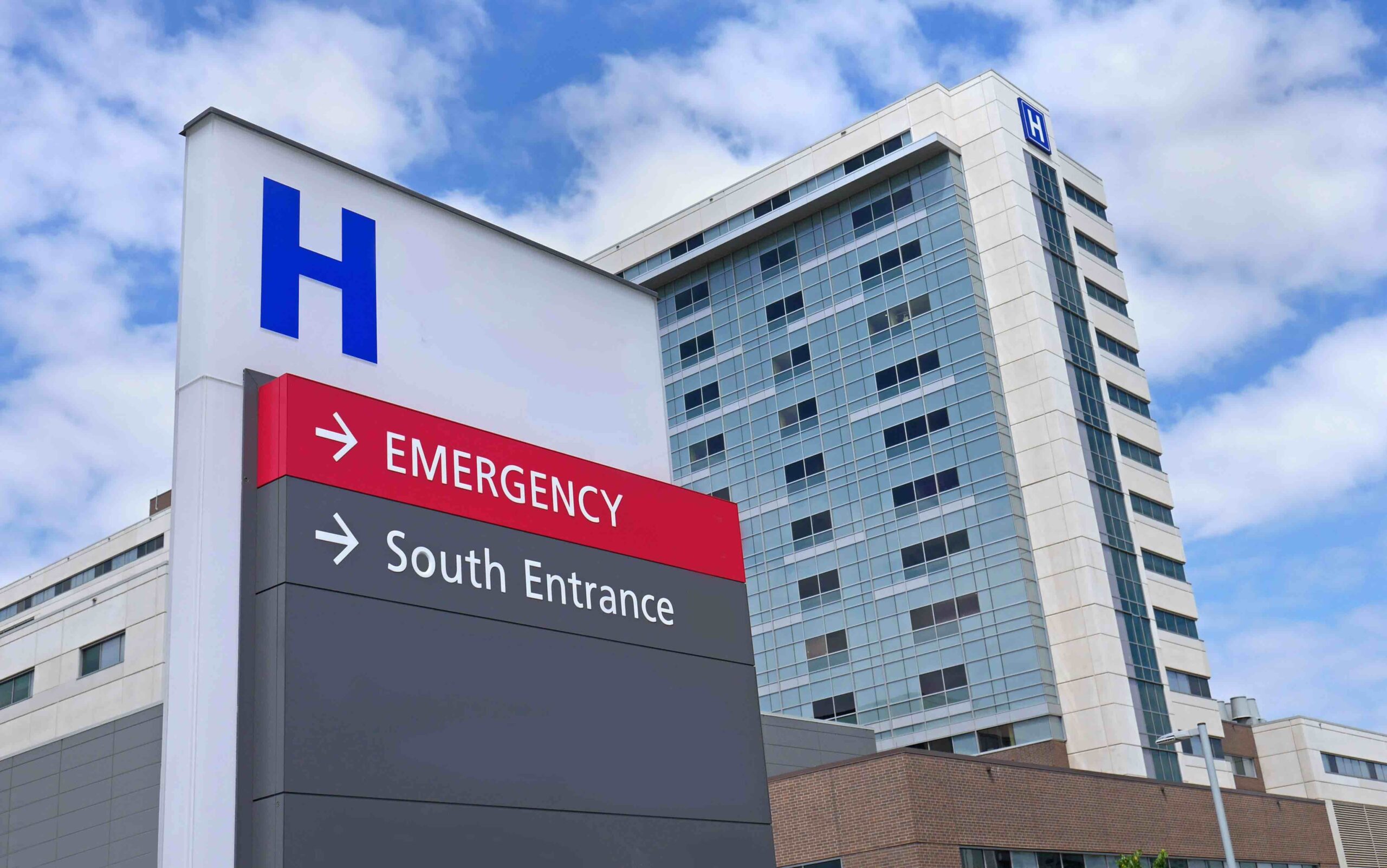Hospitals in the 340B Drug Pricing Program that administer more high-cost drugs will benefit more from CMS’ plan to reimburse 340B hospitals for a total of $9 billion in lost reimbursements between 2018 and 2022, according to a new study. The findings, published in JAMA Health Forumthey raise equity issues, because hospitals that do not receive compensatory lump sum payments are disproportionately rural, publicly owned, and nonacademic.1
Hospital | Image credit: Spiroview Inc – stock.adobe.com
The 340B program entitles qualified hospitals and federally supported safety net clinics to buy drugs at a discount from manufacturers while charging insurers at regular rates, with the savings going to fund safety net care, free services for uninsured patients and other costs to increase quality of care. . In 2018, CMS implemented substantial cuts to Part B drug reimbursements for 340B hospitals, but the Supreme Court found these cuts illegal in 2022.1.2
In 2023, CMS proposed a global payment of about $9 billion to 340 million hospitals that were subject to the reduced reimbursements.3 At the time, 340B providers had already received $1.5 billion after processed or reprocessed 340B drug claims for 2022, but some 340B providers in the Outpatient Prospective Payment System (OPPS) had received $10.5 billion less than they should have have from 2018 to the third quarter of 201822. $9 billion is still owed.
Because of OPPS’s budget neutrality system, $7.8 billion in cuts to non-drug reimbursements must be made to offset the overall defunding proposal, meaning hospitals that administer large amounts of drugs ‘high cost will benefit, while others may be subject to a net loss in Medicare reimbursement.1
Sayeh Nikpay, PhD, MPH, of the University of Minnesota School of Public Health

To characterize the hospitals that would benefit from the proposed reimbursements, study author Sayeh Nikpay, PhD, MPH, associate professor at the University of Minnesota School of Public Health, used publicly available data to link the estimates of CMS global payment with hospital cost reports. and data from HRSA’s Office of Pharmacy Affairs to identify OPPS hospitals that participated in the 340B program for at least 1 year when Part B reimbursement cuts were in effect between 2018 and in 2022.
A total of 1,673 OPPS 340B hospitals were included in the study, and 1,325 (79%) received payment, with a median payment of $1.8 million (range, 4.0–17.0) million. To calculate each hospital’s nonmedical Part B reimbursement, the lump sum reimbursements were adjusted to represent the payments the hospitals would have received and then deducted from the total Part B reimbursements for the same period. This determined the significance of the cuts in non-medical reimbursement for each hospital.
The characteristics of the hospital of interest in the study were net operating income; the burden of uncompensated care, such as charity care and bad debt costs as part of net operating income; total profit margin; rurality; public ownership; and teaching status. Nikpay explored the associations between payments and uncompensated care burden, payments and total profit margins, and payments with the nonpharmaceutical share of Part B reimbursement.
Hospitals receiving the payment had higher median operating income ($2.34 billion vs. $1.22 billion), were less likely to be classified as rural (24.8% vs. 56.6%), and had less odds of being publicly owned (20.2% versus 28.7%). In addition, teaching hospitals were more likely to receive payments than non-teaching hospitals (56.2% vs. 20.4%).
The nonpharmaceutical share of overall Part B reimbursements was negatively correlated with reimbursement as a proportion of operating income. Although there was no significant difference in uncompensated care burden and operating margin by expected payment status, each percentage point increase in reimbursements as a proportion of operating income was associated with a decrease of 2.1 percentage points of the uncompensated care burden. Each percentage point increase was also associated with a 2.6 percentage point increase in operating margins.
One-fifth of OPPS 340B hospitals are not expected to receive a lump sum payment under the CMS remedy for 340B-specific cuts in drug reimbursement. Rural, publicly owned and nonacademic hospitals will disproportionately face cuts in non-drug Medicare Part B reimbursement without lump sum reimbursement, Nikpay wrote. Hospitals expected to receive smaller reimbursements receive proportionately more Medicare Part B reimbursement for nondrug services and are less financially stable than those with larger reimbursements.
Although the study was limited by its reliance on administrative data that was not subject to generally accepted accounting principles, the results suggest that inequities may affect the most vulnerable hospitals.
Overall, these data suggest that the CMS reimbursement proposal may inadvertently harm vulnerable 340B hospitals while rewarding the less vulnerable, Nikpay concluded.
References
1. Nikpay S. Characteristics of 340B hospitals receiving Medicare Part B reimbursement.JAMA Health Forum. Published online April 26, 2024. doi:10.1001/jamahealthforum.2023.5397
2. Joszt L. The Supreme Court ruled unanimously in favor of the hospitals in the 340B decision. The American Journal of Managed Care. June 15, 2022. Accessed April 26, 2024. https://www.ajmc.com/view/supreme-court-unanimously-rules-in-favor-of-hospitals-in-340b-decision
3. Joszt L. CMS Proposes $9 Billion Global Payment to 340B Hospitals. The American Journal of Managed Care. July 10, 2023. Accessed April 26, 2024. https://www.ajmc.com/view/cms-proposes-9-billion-lump-sum-repayment-to-340b-hospitals
#CMSs #340B #Reimbursement #Proposal #Hurt #Vulnerable #Hospitals #Reward #Higher #Earnings
Image Source : www.ajmc.com
